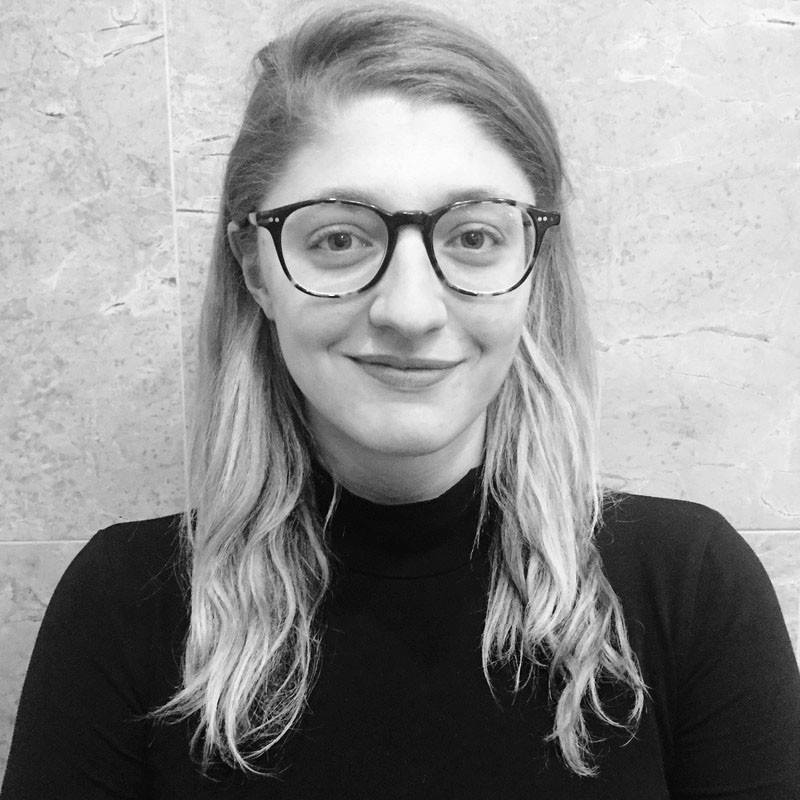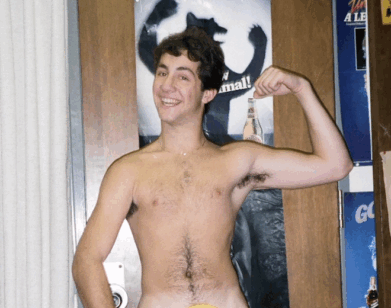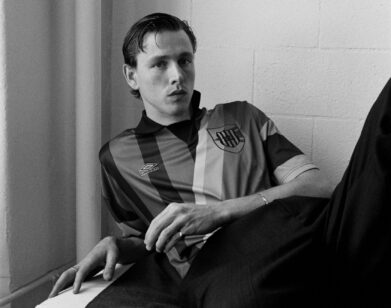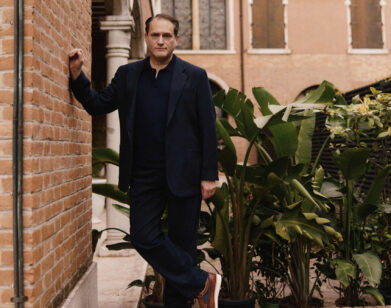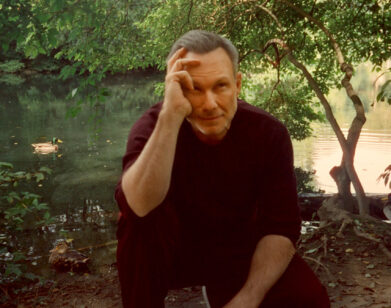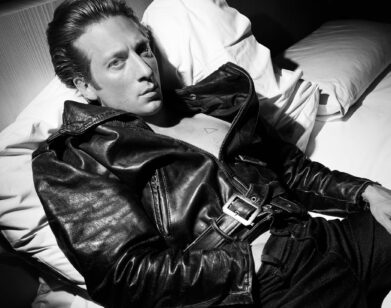Discovery: Elizabeth Rose
When we meet writer-director Elizabeth Rose at the Provincetown International Film Festival, the morning after seeing her short film The Law of Averages, we explain that we’re wearing sunglasses because we woke up with a swollen eye. “That kind of thing happens to me all the time,” she answers. It’s the sort of fast, self-deprecating response that one would expect from Rose, whose 14-minute film is artful and ironic. Punctuated by pathos, mordant wit, and memorable dialogue between complex women, The Law of Averages focuses on a mother (Suzzy Roche) and daughter (Lucy Kaminsky) as they navigate a traumatic event. In the film, a grandmother is in the throes of death, with her cabin-bound family surrounding her. When she dies, her body remains with the shocked family for an uncomfortably long spell (around 10 hours).
Later that afternoon, the 31-year-old filmmaker—who goes by Lizzie in everyday life—would win the PIFF award for best narrative short film.
In spite of its darkly funny tone, Rose notes that while making The Law of Averages, she never framed the piece as a comedy to her actors. “The saddest times in one’s life and with one’s family are oftentimes embedded with humor,” says Rose, who studied screenwriting at Columbia University. “I wanted to make a film that reflected the humor of really difficult situations that I think everyone has experienced. There is so much humor that comes out of the absurdity of dark situations that go on for too long—or any number of dark situations.”
HOMETOWN: Montréal, Quebec until age 6; then Cambridge, Massachusetts.
BASED IN: Morningside Heights, Manhattan.
THE GENESIS OF THE LAW OF AVERAGES: My grandmother died and it was such a nightmare. My entire family behaved in garish and hysterical ways, myself included. The movie is a dramatization—I didn’t get there until the day after she died. It happened in the middle of film school and I was avoiding making this film for the longest time because it was too personal. The movie is very distant from what happened but I wrote down the actual story, and it’s something I would tell to people like, “How funny is this?” And they’d be like, “That’s really sad.” And I was like, “Oh, this is a good story.”
SACRED BONDS: I don’t think my parents ever thought I’d write about them, ever. Somehow it felt off-limits and kind of sacred. My mother’s an incredible person. She was very interested in me tackling stories [as a filmmaker] about disenfranchised women and female perspectives in general—but not, like, us.
MIRROR IMAGE: [Lucy Kaminsky] walked into the room for the audition and—I’m almost embarrassed about this now—I was like, “That girl is magic. She’s incredible. I don’t know what it is.” Since then I’ve realized that a version of myself walked into the audition, and I was like, “I love it.” People constantly ask us if we’re related. I think she brought clothing [to the shoot] that she thought I might wear too. She was like, “What do you think about this?” I was like, “Oh my God, yes. I don’t know how, but you’re so good.”
THE MOVIE’S TRUE SUBJECT: What I thought was a movie about an event turned into this weird thing that dovetailed with my relationship with my mother, which I actually talked about a lot in therapy. I was like, “Oh no, this movie is just about my relationship with my mom.” It’s about how I feel about my mom and how I feel my mom felt about her mom. And I think it was very obvious to my mother—because as I was making it, I was also picking fights with her in a way I hadn’t in a long time.
She and I were almost like best friends until very recently, and then I think I became resentful that we were too much of a team. I think there’s something therapeutic about making films in general. Maybe you don’t always know why you’re making a specific film, but there’s a reason. This movie specifically changed my relationship with my mother for the better in a few weeks.
THE PERILS OF CATHEXIS: I went to Harvard undergrad. I was a rowing recruit. I really loved it and I was pretty good at it, and then I got in my own head about it. I had the body for it, I’d done the training, and suddenly I’d be on the starting line and I’d have a panic attack. And I was not alone in this. There were a great many of us [who psyched ourselves out]. I just did everything very quietly and by myself. If I had talked about how I was nervous or any number of the very normal things I was feeling, I probably would have been fine. I started to do that at 25 or 26.
THE LEARNING CURVE: Part of my process of becoming an adult has been learning that you really need to go through the steps of getting to be good at anything. I made a couple documentaries and I never released them or submitted them to festivals. I think I was afraid of my first pieces of work not being masterpieces, and they weren’t, because they were my first pieces of work. But I did myself a disservice by not learning what would have happened with them in the real world. It took me a while to convince myself that it was okay to try as hard as you could and have it be [only] okay.
It’s funny because as an athlete [going through the steps] is all you do. It’s called practice. You do it six days a week. You do that, and you do lots of things to teach yourself, so that then when you’re racing, you’re not racing. But with art we always think it’s in the realm of magic. Now I’m at the beginning of the process of being able to just do things, put them out there, and learn from them and go on to the next thing.
ON COLLABORATION: A lot of women get into a headspace where you either have to wait to do the perfect thing, or you’re invested but it’s not your thing. I was a very good helper on lots of other people’s things. And then I realized, “I don’t want to just be a good helper.” But if you help people so much, you can get a little resentful and think, “It is annoying when people are like, ‘I need this, I need this, I need this,'” so at first I had a hard time asking for help.
I’ve learned so much about myself and about how to work by collaborating with other people. It’s also been a really good stepping-stone to deciding, “Now I would like to do something on my own, and here’s how I know I have to work.” I used to be like, “I’m going to write for 15 hours a day” or whatever. With a collaborative thing, you’re like, “We’ve got six hours in us today, maybe.” You work in much more carefully appropriated chunks of times, which I’ve found to be much more productive.
WHAT’S NEXT: I’m co-writing a feature film with a friend, Francisca Alegría, and she’ll direct it. The initial idea was hers. I approached her—well, we were roommates, so I “approached” her, like, in the kitchen, making coffee. We had written scripts in a class together, and there was one she had put on a shelf. I was like, “Are you going to do anything with that? If not, can I do a pass on it? Because I love that movie.” It’s a coming-of-age story for a woman in her sixties. It’s mostly realist, and then it becomes magical realist/surrealist, but [the perspective] is still very much flights from realism.
I just started working on a new feature that I’m writing myself. That’s a story that’s very far from my own experience but that’s incredibly interesting to me. Another feature I really want to make is about female mentorship and some really dark things that go down between women in the arts. I do this thing where I free write when I’m trying to find ideas. I go to a café and just write either what I see or what I’m thinking about, but the rule is I have to keep writing. I try to do it for an hour, but usually it’s 30 to 45 minutes. I’ve found really good dialogue that way, and also I found that I kept on circling this idea of female mentorship. Mentorship is not really like friendship, it’s a relationship where there’s a power dynamic, which is fascinating to me.

